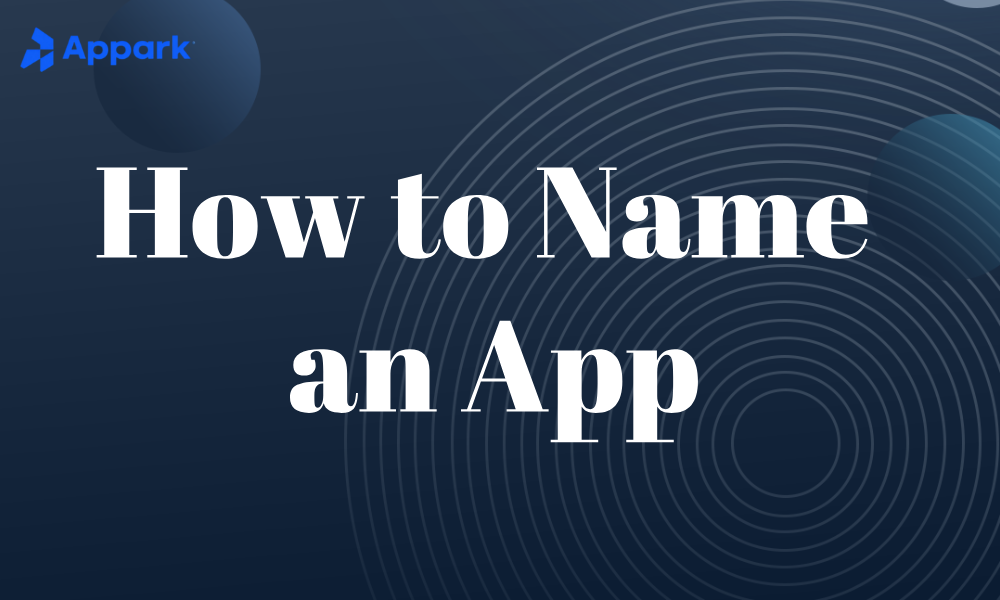12 Tips on How to Name an App in 2025

Introduction
Your app’s name is more than a label—it’s the first user interaction, the first impression, and sometimes the difference between a download and a scroll past. A well-chosen name communicates value instantly, resonates with users, and leaves room for your brand to grow.
This guide shares 12 practical tips on how to name an app, backed by real examples, to help you find a name that sticks and works in the App Store or Google Play.
12 Practical Tips on How to Name an App
1.Define Your App’s Core Value
When naming your app, clarity is everything. A good app name should instantly signal the core value it delivers. Calm works because it immediately conveys relaxation and meditation, while Todoist clearly points to productivity and task management. When users can connect the name to a clear benefit, they’re more likely to remember it—and more likely to download it. 
2.Keep It Short and Simple
Long or complex application names fade from memory fast. The strongest ones stick to one or two words, easy to spell and quick to type. Think Uber, Slack, or Zoom—short, punchy, and effortless to share. If your app name can be said in one breath and remembered after hearing it once, you’re on the right track.
3.Make It Easy to Spell and Pronounce
A good app name is useless if users can’t spell it in the app store search bar. Struggle-free spelling and pronunciation matter for discovery. TikTok is short and phonetically clear; Venmo is unique but simple enough to type. If people hesitate when saying or searching your app name, you risk losing downloads before they even find you.
4.Balance Creativity with Clarity
How to name an app creatively without confusing users? The trick is striking a balance: unique enough to stand out, but clear enough to explain itself. Spotify is invented but still signals “spot” + “identify” music. Snapchat merges “snap” with “chat,” leaving no doubt about its purpose. Lean too far into abstract, and you risk losing users’ attention.
5.Brainstorm Themes, Associations, and AI Assistance
The best mobile app names usually come from structured brainstorming, not random guesses. When exploring how to name your app, start with your app’s category and user problem, then list related words, phrases, and concepts. Canva draws from “canvas,” instantly linking to creativity and design. Duolingo merges “duo” and “lingo,” signaling language learning. Organized themes help you uncover names that feel both relevant and memorable. You can also think of AI as your naming partner. Tools like ChatGPT or name generators quickly suggest ideas in different styles and languages. Then refine them with your own creativity. 
6.Optimize for Keywords (ASO)
A smart app name balances branding and search. When thinking about how to name your app, consider relevant keywords that improve visibility in the App Store or Google Play without overstuffing. Canva: Design, Photo & Video combines a distinctive brand with descriptive keywords, making it both memorable and discoverable.
7.Align With Your Brand Personality
Good app names aren’t just functional—they carry personality. Whether playful, professional, or minimalist, the name should reflect your brand’s voice. Slack feels approachable and casual, while Microsoft Teams leans corporate and direct. Naming is branding: your choice sets the tone for how users perceive your product from day one.
8.Consider Cultural and Global Fit
If you want international reach, test your application name across languages. Some words carry unintended meanings abroad. For example, Chevrolet’s “Nova” failed in Spanish-speaking markets because it sounded like “no va” (“doesn’t go”). A name that feels safe in one market might hurt adoption elsewhere. Cross-cultural checks keep your brand from stumbling overseas.
9.Check Domain and Handle Availability
Your mobile app name doesn’t live in isolation—it extends to websites and social media. Before committing, check if a matching domain and handles are available. Dropbox secured “dropbox.com” early, which reinforced its brand authority. Having a consistent name across platforms builds trust and makes it easier for users to follow and engage with you.
10.Avoid Legal Traps and Trademarks
No matter how creative a name is, it’s a dead end if someone else owns the rights. Always run a quick trademark search to avoid legal issues. Instagram originally launched as “Burbn,” but that name had conflicts and lacked clarity—so they switched. Protecting your app name early saves you from expensive rebrands later. 
11.Think Long-Term Scalability
When deciding how to name your app, plan for future growth. A name tied too closely to one feature can limit you later. For example, Netflix began with “movies by mail,” but its broad, flexible name made streaming expansion seamless. Pick something that works now, but also leaves room as your app evolves.
12.Test Names With Real Users
Don’t rely on your team’s preference alone—test your shortlist with actual users. Ask them what the name makes them think of, how easy it is to remember, and if they’d search for it. Gmail’s early testers liked its clarity: “Google + mail” was direct and obvious. Feedback surfaces blind spots and helps confirm your best option.
Naming Psychology & 2025 Trends for Your App
How Names Stick in Users’ Minds
A great app name isn’t just readable—it’s memorable. Cognitive psychology shows that certain features help names stick:
- Rhythm and sound patterns: Names with repeating sounds or balanced syllables are easier to recall. For example, "TikTok" uses a catchy repetition.
- Action-oriented words: Verbs or action cues signal energy and purpose.
- Emotional triggers: Words that evoke curiosity, comfort, excitement, or aspiration resonate with users.
- Simplicity over complexity: Shorter and simpler names reduce cognitive load and increase recall.
These cues aren’t just theory—they’re what make names stick in users’ minds.
Observing Naming Trends in 2025 and Beyond
In 2025, the trend is clear: names that are simple, global, and emotionally engaging stand out the most. The easiest ones to remember are short, meaningful, and work across cultures.
Make sure your app name works across platforms—App Store, Google Play, social media, and domains—for consistent recognition.
Finally, aim for a balance between short-term discoverability and long-term brand growth. A great name should help people find your app now while staying flexible as your product and brand evolve. 
Taking Action: Name Your App with Confidence
Now it’s time to act. Choose your top ideas, test with users, refine, and trust your judgment.
Naming an app can feel tough, but with a clear process and the right cues, you can create good app names that stick now and scale with your brand.